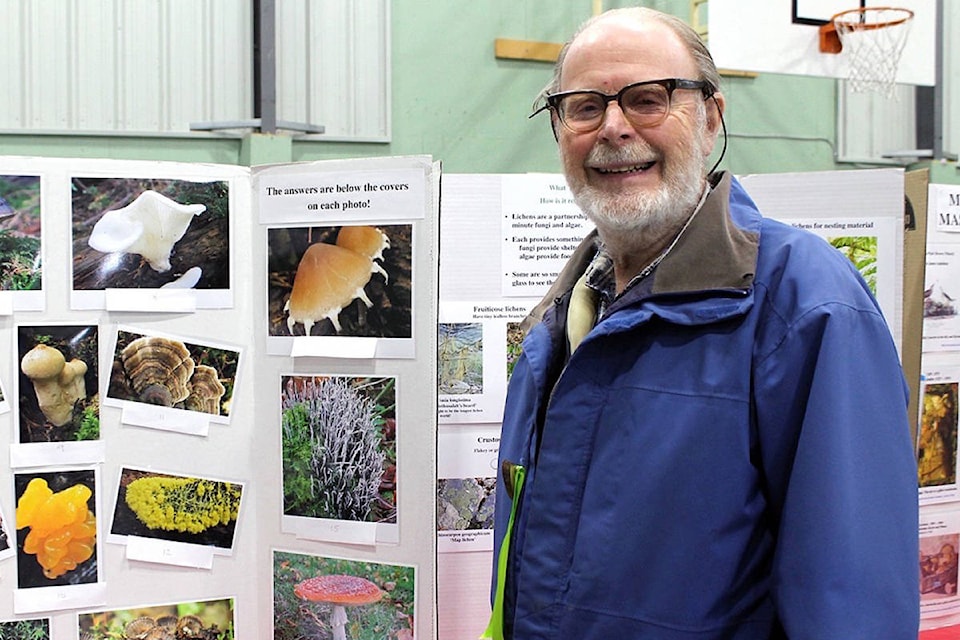Terry Taylor knows his mushrooms.
Along with the rest of the Arrowsmith Naturalists, Taylor recently helped host the Mid-Island Mushroom Festival. Taylor’s involvement in the B.C.’s mycological scene dates back to the 1970s.
The mushroom festival played host to vendors of all kinds, but the most popular exhibit by far was a line of mycologists from across Southern B.C. and Vancouver Island. They were on hand to help people identify wild mushrooms they brought in.
However, even the experts were stumped at some of the fungi they saw. Taylor says that’s just due to the sheer variety of mushrooms that call Vancouver Island home.
READ MORE: Giant mushroom find makes Thanksgiving tastier for B.C. couple
“In this local area, there’s probably several thousand species of mushrooms. That’s why we have a lot of difficulty putting names on a lot of them,” said Taylor.
Mushroom foraging can be a rewarding pastime, with the forests and mountain slopes near Parksville and Qualicum Beach offering an array of varietals, including delicacies like pine (matsutake) mushrooms and golden chanterelles, to name a few.
However, Taylor and other experts caution against going out to find edible varieties without knowing exactly what you’re looking for.
“Best to go with somebody who knows already. Preferably join a mushroom club, or mycological society,” said Taylor.
The closest mycological society to the Parksville Qualicum Beach area is in Victoria, but the Arrowsmith Naturalists often get together in the fall to go on mushroom walks.
READ MORE: Experts warn against picking Vancouver Island’s magic mushrooms species
“Mainly, go after the mushrooms you know already. The ones that are easy to identify, and learn the details of them. Chanterelles, pine mushrooms, etc. Also learn the poisonous mushrooms – the other mushrooms that are similar.”
The pine mushroom in particular has a deadly lookalike called Smith’s amanita that Taylor says has caused problems in the past. It even grows in the same areas, making accurate identification an even more important part of harvesting pine mushrooms.
“Every year the poison control centre in Vancouver and St. Paul’s hospital usually has someone on kidney dialysis from making this mistake,” said Taylor.
Also making headlines lately is the world’s deadliest mushroom, known as the death cap mushroom, which has popped up across parts of southern B.C. It’s often found on boulevards and in gardens.
Mushroom poisoning is on the rise in B.C., according to the The B.C. Centre for Disease Control.
The BCCDC recently put out a release stating that 2019 is on track to be a record year for mushroom poisoning calls. They are urging people to use extreme caution when foraging for or eating wild mushrooms, and to keep a close eye on children.
READ MORE: World’s most poisonous mushroom spreading in B.C.
“Approximately two thirds of mushroom related poisoning calls in 2019 involved children under the age of five,” said Raymond Li, a pharmacist with Poison Control. “It is important to be aware of dangers from consuming unidentified mushrooms, especially death cap mushrooms. We would like to remind mushroom hunters, parents and pet owners to be vigilant as they enjoy city, parks, forests and even their own backyard.”
The BCCDC report says that the death cap mushroom has been popping up in Victoria and south Vancouver Island, as well as the Gulf Islands and the Metro Vancouver and Fraser Valley region.
The report also says to exercise extreme caution when foraging in remote areas.
Taylor seconded that. Mushroom foraging often means leaving the beaten track, and that can be deadly for mushroom pickers who leave no evidence as to where they’re headed.
“There’s a real issue collecting mushrooms because a lot of mushroom collectors are secretive. They go out alone, they leave trails, they go up steep slopes, and then they have an accident and nobody knows where they are,” said Taylor.
“So there’s at least as much danger in collecting mushrooms if you’re careless as there is in poisoning yourself if you’re careless.”
That being said, with the right precautions, spotting mushrooms out in the woods can be a rewarding pastime.
“For me, it’s just finding new species and going out on a hiking trip and finding something that’s coming up. I combine it together with hiking. And it’s just sort of going out in the woods and finding things you haven’t seen before. As well as occasionally coming across something like a chanterelle or a pine mushroom,” said Taylor.
